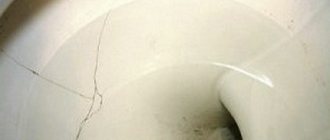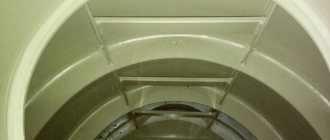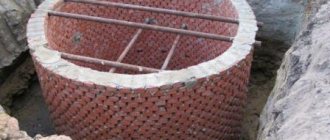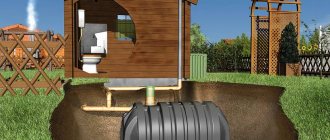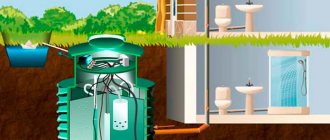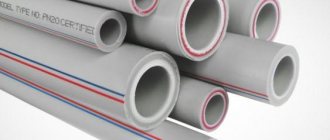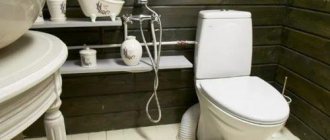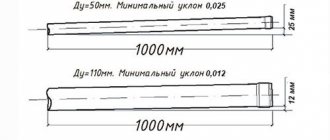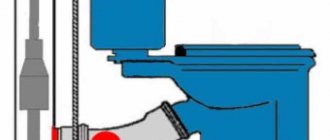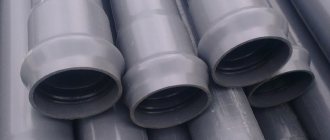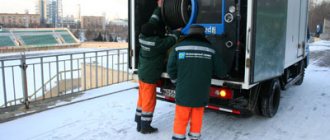If a person decides to build a private home, he will definitely face a number of communication issues.
One of them will be: connection to the central sewerage system. There are two types of sewerage - central and autonomous. The price varies based on the choice of connection systems, as well as the companies and teams that will perform the connection.
When introducing autonomous systems, it is not necessary to collect a large amount of permitting documentation and invest large amounts of money. However, it should be understood that in this case the owner must constantly monitor the tanks and carry out their timely pumping.
Central or autonomous
When the estate is far from the central sewer line, willy-nilly it is necessary to build a septic tank, or bury an ergobox in the ground. When a populated area has a central sewerage network, the question of choice arises: what is better - to build your own local system, and a septic tank or bio-treatment station will appear on the site, or to carry out a series of actions, as a result of which a central sewerage system will appear in a private house.
Which of the “games” is worth making in the future, you need to decide on your own, weighing the pros and cons. The purpose of writing an article is to present information that will be useful for making the right decision. It is not a fact that in every case connecting a house to a central sewer system is the best solution.
Autonomous systems do not require going through authorities, lengthy collection of permits, approvals, and are much cheaper for home owners. However, they require attention - monitoring the filling of tanks, timely pumping. Autonomous systems are economically and operationally justified with a daily flow rate of up to 5 cubic meters. If the flow rate is higher, experts recommend taking a closer look and installing a central sewer system into your home.
Benefits of centralized wastewater disposal:
- There is no need to monitor how wastewater is treated in the local sewer network;
- There is no need to worry about timely pumping of the septic tank;
- Stormwater and domestic wastewater are simultaneously removed from the site;
- Connection costs can be much lower than building your own septic tank;
- A large area of the site will remain undisturbed, free for the placement of buildings or other structures.
Flaws:
- Lengthy design and approval preparation: you will need to collect a lot of documents, obtain permits from several authorities - the process is long;
- User fees must be paid monthly;
- There may be an increase in tariffs, the amount of which the user cannot influence.
Exploitation
Connection to the central sewer system does not mean that the owners will not have problems with operation.
In order for the tie-in to function correctly and not cause trouble, you must follow a few simple rules:
- It is prohibited to throw large objects into drains that clog the pipeline - food waste, paper, hair, feminine hygiene products, etc.
- It is recommended to regularly flush the siphons under the kitchen sink, and clean the plumbing equipment using a plunger and a wire brush. Using a brush allows you to deal with minor blockages in the toilet bowl. You can make a ruff yourself from a piece of cable, the end of which is unraveled in the form of a fan.
- The use of strong chemicals is prohibited! Cleaning up clogs in this way causes environmental poisoning. And volatile chemical compounds that arise when cleaning substances are poured into sinks or toilets have the most adverse effect on the health of the owners.
Obtaining the necessary documents and permits
Each network has an owner. Centralized sewerage too. Therefore, you first need to find out who owns it, because it is with its owner that you will have to negotiate and cooperate. This could be, for example, Vodokanal, or maybe another organization. For the convenience of the network owner, we will refer to it as Vodokanal in this article.
Having identified the owner, you need to collect and prepare the required documents and carry out preparatory work on the site. Only after this, in the presence of a Vodokanal representative, a legal connection is made. Otherwise, for illegal tapping you will be subject to fines and dismantling of the connection at your expense, plus they may charge money for drainage for 6 months.
If an unauthorized connection to the central sewer system of a private house was made before you purchased it, you should contact Vodokanal. If the connection and insertion are carried out according to the standards, you may not have to disassemble everything. The connection will be arranged, which will cost much less.
To submit an application for connection to the Vodokanal service you need:
- Determine the exact location of connection (insert);
- Draw up a diagram of the supply pipeline for laying;
- Select pipes for it.
Therefore, first you need to find out what type of central sewer network you are going to connect to. It can be separate, when domestic and storm drains each go through their own pipelines. It can be mixed, when the drains flow in one pipe, there is no need to insert two separate branches. The type of sewerage system determines the method of draining water from the site (in one or two mains), as well as the possibility or impossibility of draining storm water. For a separate system, permission for each of the networks is issued separately (all papers and the project). In cases where it is impossible to drain storm water into the central network, it can be purified and used on site, for example, for irrigation or washing. A separate tank will be needed to collect storm water.
Since all financial costs for bringing drains to the point of connection, as well as work on the connection, fall on the shoulders of the developer (the owner of the site), it is reasonable to first make an approximate calculation of costs and think through all measures to reduce them. Perhaps it will be possible to gather like-minded people among neighbors, then costs will decrease. Another measure could be the financial participation of the developer in the modernization project. If Vodokanal makes a positive decision, part of the work will be paid for by the organization.
To avoid difficulties related to the rights of neighbors, you must first agree with them on the construction work near their plots. The consent of the neighbors must be recorded (a free-form document with a list of signatures).
What documents need to be prepared
- First of all, you need to contact surveyors at a company engaged in geodetic examinations and obtain a site plan with a sewerage diagram (usually on a scale of 1:500).
- With the received plan, attaching a copy of the passport, a document on ownership of the property, the owner applies to Vodokanal with an application.
- Vodokanal specialists must issue technical conditions (TS) for the future connection (the response period for the application is 2 weeks).
- It is necessary to develop a connection project completed by the designer based on the specifications and site plan.
- Coordination of this project by specialists: an architect and an expert from Vodokanal.
- The choice of contractor - the owner of the property or the organization that will directly connect the private pipeline branch to the centralized main line. The artist selection is displayed in the document.
- If there are other central networks in the territory where the sewer and stormwater branches will pass, permissions from the network owners to carry out work in their area of responsibility will also be required.
Already from what has been said, it is clear that an accurate project will be needed, agreed upon by several authorities. For most owners of suburban areas or new buildings, it is easier to contact companies that collect and prepare documents to prepare documentation. This is not cheap, however, it saves the site owner from wasting time and making mistakes.
Results
The entire pipeline is laid in this way. When the assembly is completed, you will definitely need to check the angle of inclination. It is impossible to fill the trench before the inspection.
When filling a trench, sand and gravel are first poured; this layer should be five to ten centimeters higher than the pipeline. Then, for good shrinkage, this layer must be well watered.
This will protect the pipe from the pressure of stones and soil, which can cause harm to the pipeline. Then the ditch is completely filled with soil. The last step is to connect the local backbone to the central network. This must be done strictly with the presence of a representative of the water management service, who can then confirm that all work carried out complies with sanitary and construction standards.
Preparatory work
Once the decision and all approvals have been received, you can begin laying the connection branch in accordance with the project. The connected branch must be equipped with a water meter. This is a must. The sensor should be located in a place convenient for inspection. In addition to the laid branches, it is necessary to build an inspection well on the site to service the branch and the connection point. Shut-off valves must be installed in the well. If the branch has a length of more than 12 m, angles of rotation, differences in height, it is necessary to install additional wells. The pipes to the inspection well should approach at an angle, the inlet pipe should be located above the drain. A trench must be dug from the inspection well to the connection point.
The slopes of the branch should be in the range from 2 to 7%, the depth of the branch should be at least 1.2 m. The presence of a reverse slope on the site, utility networks of other organizations, over which the branch will have to be raised, will require the use of forced sewerage. It will also be required if plumbing fixtures are installed in the basement of the house, the waters of which can only be removed forcibly.
If pipes of 100-110 mm are sufficient for an autonomous sewer system, then pipes of 150-160 mm will be needed for insertion. To lay them, a trench is dug. Its depth is greater than the depth of the branch (below the frost line) by the height of the sand bedding (10-15 cm of sand). It is advisable to take PVC pipes (red) with sockets at one end. They are laid with sockets towards the water flow and connected using o-rings. Hydro- and thermal insulation is used for the pipeline (the joints do not require additional insulation, since frost-resistant seals are used at the joints).
If forced sewerage is used, then the wastewater is supplied to the inspection well under pressure. From the inspection well, wastewater flows by gravity into the central sewerage system.
How to properly arrange a site for future tie-ins
According to SNiP, connecting a pipeline to the central pipeline is allowed only if there is a special sewer well through which the new branch will pass.
The pipe leaving directly from the house must necessarily have an angle of inclination located above the drain level. The pipeline is laid to a specific depth. Its size is affected by the degree of soil freezing.
The laying depth dimensions are shown in special tables of the current SNiP P-G.3-62. The building area is taken as a basis. In northern Russia this value reaches 3.5 meters. In the middle zone it is enough to maintain 3 meters. In the southern regions the maximum depth does not exceed 1.5 meters.
Of course, the data provided is approximate. Each parameter is purely individual. When determining the depth of pipe installation, certain factors are important:
- Type of soil;
- Area;
- Groundwater.
The average laying depth reaches 1.2 meters. Moreover, 0.5 meters is considered the minimum value. All measurements are taken from the top of the pipe.
When a trench is dug, its size should exceed the laying depth by about 5 cm. The angle of inclination of the pipe remains a very important and serious point. If it is small, the flow of wastewater will be very slow and the pipe may become clogged. If the slope is large, the liquid's falling speed will be too fast. The fat will not have time to wash off, and a blockage may occur.
Experts recommend:
In order to avoid such problems, when laying sewer pipes, maintain a slope of 2 cm per linear meter.
Another serious nuance is the turns of the pipeline. A straight route is considered ideal. But this is not always possible, therefore, when it is necessary to turn the main line at a large angle, an inspection well is built at the turning point.
Professionals also advise installing such an inspection well when the sewer line is long. This will make it possible to control the entire operation of the system.
Source: obystroy.com/kanalizatsiya/kak-vypolnit-podklyuchenie-tsentralnoj-kanalizatsii-k-chastnomu-stroeniyu#h2-chto-nuzhno-sdelat-v-pervuyu-ochered
Connection to the central network
After connecting the internal sewerage network to the manhole, an application for connection is submitted to Vodokanal. The insertion is carried out in the presence of a representative of Vodokanal. He participates in the inspection of the branch, its compliance with design data, in checking the system (by pouring) and the tie-in for leaks. If defects are detected, they are included in a special list. If existing defects prevent the system from being accepted, the owner of the connected house is given time to correct it. If no such defects are found, based on the results of the work performed, a long-awaited document is drawn up - an acceptance certificate, which is signed by a representative of Vodokanal.
The connection to the centralized sewer network is carried out by Vodokanal specialists. It can be carried out in two ways: through a tee, using an adapter.
- The sewer pipe is cut, a piece is cut out of it along the length of the tee being installed. The edges of the cuts are cleaned. A coupling is put on one end of the pipe, and a tee on the other (it and the coupling must have a liner and be lubricated with silicone). The coupling connects the tee to the second part of the pipe.
- The adapter is a special fitting. It costs more, however, this design is more durable. The adapter has a nozzle corresponding to the diameter of the supply pipe. The section of the sewer pipe is cleaned and a hole is cut out in it. The edges of the hole are cleaned. Cover all joining surfaces with sealant, put the adapter on the pipe leading from the inspection well and place it on the Vodokanal pipe. The cover is attached to the pipe using clamps.
The final document authorizing the connection of a private house to the central sewer system is the act of acceptance of connection and pressure testing of the line, signed after testing by a representative of Vodokanal. After signing the act, a drainage agreement is drawn up and signed.
Let's move on to the stages of connecting the house to the sewer system
— Work is underway to level and compact the bottom of the dug ditch.- — They fill in a mixture of sand and gravel, this layer should be about fifteen centimeters. There is no need for compaction along the length of the trench; it needs to be compacted by force in two places - near the main entrance and a couple of meters from the well.
- — Pipes are laid in a trench from the house at a downward slope with a socket. It is necessary to clean the places where the pipes are connected from dirt.
- — The bell ring and the smooth edge of the pipe section are coated with silicone.
- — The length to which it will be necessary to insert a piece of pipe into the socket is measured and a special mark is made.
- — The pipe is inserted into the socket all the way.
Storm water drainage
Not only the drainage of domestic (gray, black) water is carried out according to the rules. Its own rules have also been developed for the centralized drainage of storm water. Centralized storm sewerage has a large capacity. However, in some periods, the collectors are overfilled and often become clogged, therefore, when connecting a privately owned storm sewer to a centralized storm network, the pipe is equipped with a check valve to prevent flooding of the area with storm water from the network.
There is an alternative to centralized storm water drainage - an autonomous drainage system with a storage tank and sump. Rainwater is collected using a drainage system from the entire site. Precipitation water is collected in a settling tank, where solid impurities precipitate. Then it is filtered and collected in a second tank, from where it is supplied for various household needs. The efficiency of the system depends on correct calculation and sufficient tank capacity.
The advantage of this system, which cannot be argued with, is its free operation. There is no need to collect documents and approvals from authorities. There is always water at hand, for which you do not need to pay.

